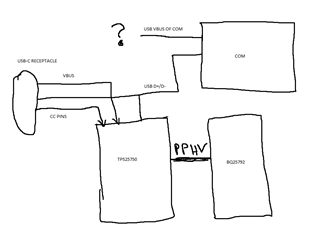Other Parts Discussed in Thread: TPS25750, USB2ANY, BQ25792
Hello!
I am a beginner with electronics design after about 12 years my electronics engineering degree.
Could anyone be helpful to review my schematic attached as pdf?
Best Regards.PowerSupplyV0.8.pdf




